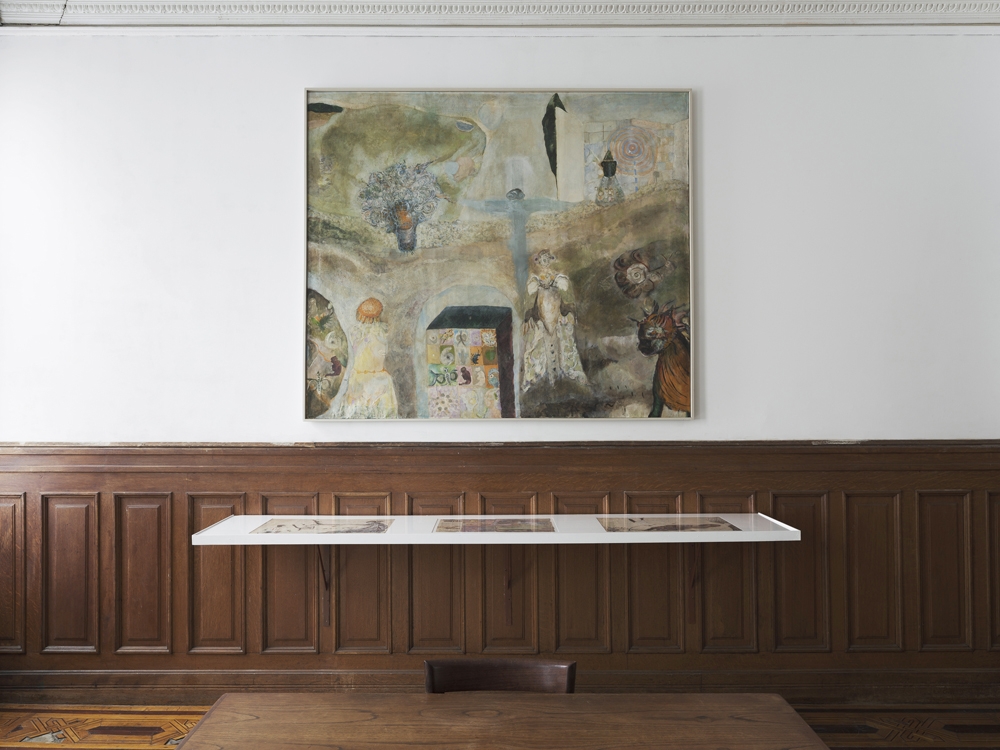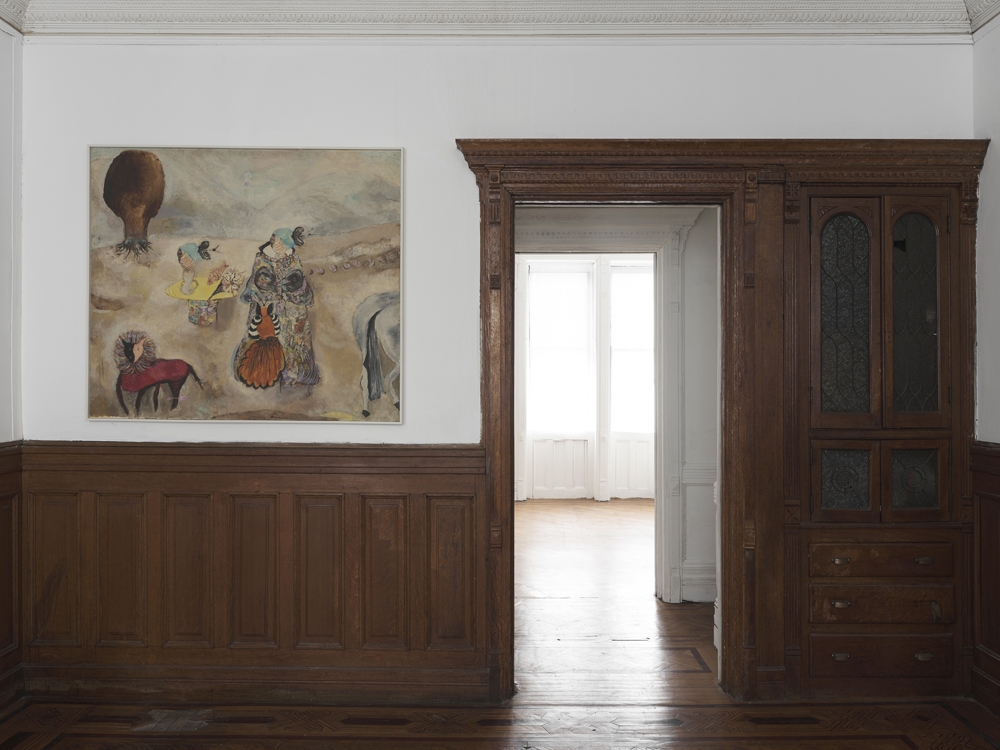15 Orient
Ljiljana Blazevska
January 23 – March 14 (extended)
Opening Reception: Saturday, January 23, 4 – 9pm
15 Orient is delighted to present an exhibition of works from the estate of the late Serbian-Macedonian painter Ljiljana Blazevska (1944 - 2020). The show represents the first exhibition of Blazevska’s work in the US and one of few outside of central Europe.Featuring a selection of paintings and works on paper spanning a fifty-year-long career, the exhibition serves as a concise introduction to Blazevska’s oeuvre and seeks to shed light on its striking originality, unity of vision, and bearing on our artistic present.
Ljiljana Blazevska was born in 1944 in Skopje, Macedonia. She spent her early childhood in her native city, absorbing the region’s strong Levantine tradition and developing the rudiments of her own oneirically founded personal mythology. At the age of 11, Blazevska moved with her family to Belgrade, Serbia, the capital of what was then the federation of Yugoslavia, where the surrounding cultural atmosphere was more central European in influence. The composite of these two cultural perspectives generated in Ljiljana a certain creative inquietude, which would later be reflected in her painting.
In 1969, Blazeska completed her postgraduate work in the painting department at the Fine Arts Academy in Belgrade, where she studied in the class of the famed Yugoslav painter Ljubica "Cuca" Sokić. By the early 70’s, she had already discovered the formal and thematic lineaments of her unique painterly world, one populated by winged creatures, mutants, princes, mothers, and brides. This world, devoid of any banal narrativity, would compel the entirety of her creative attention for the next five decades.
Over the course of her career, Blazevska’s work was featured in upwards of 20 solo exhibitions and countless group presentations throughout Yugoslavia. She was a long-time member of ULUS (the Serbian Fine Arts Guild) and the recipient of numerous awards for artistic achievement. Blazevska took part in numerous residency programs throughout Europe and in 2008, participated in the CITE International Artist Residency in Paris.
15 Orient would like to thank Zaga Skerletovic, Luke Jackson, Jean-Stephane Sauvaire, and Adrien De Mones. We would especially like to thank Viktor Shekularac, and all family and friends of Ljiljana Blazevska.
---
Some painters "search" for their themes for almost a lifetime - she was lucky enough to embrace and create a complete world, as shown by the great colorists and fantasists of the 20th century, manifesting in the "life of painting", paradoxically "the world of life". Most often, the type of painting that was closest to her was a horizontally developed, fantastic-stenographic landscape, inhabited by mythical creatures, vegetation, all teeming with some thoughtful, mysterious energy, swollen sound effects in a strictly visual-poetic sense. One gets the impression that her original, authorial, and particularly free painting practice has by no means yet received adequate judgment and deserves a place in the constellations of the most prominent.
--Dušan Đokić
A Myriad of elusive dream-like phantasms -- vast and mysterious landscapes, offer their primary characteristic – silence. […] Ljiljana Blaveska seeks peace in the silent stillness of the dream. The dreams and lucid dreams that occur in the paintings, distinguished by their noble gentleness, reveal their symbols; shyly, timidly, childishly cheerful. Flora and fauna, recognizable in their distinct forms, each have the character of the World.
--Božidar Babić
Ljiljana’s paintings have a quality of restrained poetry, candid and sublime. Stages for dream cabinets, girls transmuting to flames at dusk.
--Božidar Babić
Blazevska belongs to a generation I know only from occasional encounters, one that is too close to historicize and too far from the modern cultural ethos, a generation which is no longer in the focus of the art world and which has not yet found its position within it. Ljiljana's choice was to never position herself. She was happy living in her intimate world in which she permits herself total freedom. It is precisely this that allowed her to jump the ramp, to communicate with other. As expressive as she was, Blazevska never fully revealed herself on the canvas, did not project a single definitive idea. but gives us space and allows us the opportunity to look for our own oasis in her world.
--Darka Radosavljevic























